End If Without Block If
The “end if” statement is a fundamental concept in programming that is used to mark the end of an “if” statement block. It is typically used to define conditions and perform certain actions based on the evaluation of those conditions. The “end if” statement ensures that the code within the “if” block is executed only if the specified condition is true. This statement plays a crucial role in controlling the flow of execution within a program.
Syntax and Usage of “end if” in Programming
The syntax of the “end if” statement varies depending on the programming language being used. However, the general structure is as follows:
“`
if condition:
# Code to be executed if the condition is true
end if
“`
In this syntax, the condition represents a logical expression that is evaluated to either true or false. If the condition is true, the code inside the “if” block is executed. On the other hand, if the condition is false, the code inside the “if” block is skipped, and the program continues to the next statement after the “end if” statement.
Advantages of Using “end if” Statements
Using “end if” statements in programming provides several advantages. Firstly, it enhances the readability of the code by explicitly marking the end of the “if” block. This makes it easier for programmers to understand the flow of execution and identify any logical errors.
Secondly, “end if” statements enhance the maintainability of the code. By properly encapsulating the code within “if” blocks, it becomes easier to modify or update the conditions and actions associated with those blocks. This modularity allows for more flexible and scalable code.
Furthermore, “end if” statements help improve the overall efficiency of program execution. By precisely controlling the conditions under which certain code is executed, unnecessary computations are avoided. This results in faster and more optimized code execution.
Differences between “end if” and “block if” Statements
It is important to differentiate between the “end if” and “block if” statements, as they serve distinct purposes in programming. The “end if” statement is used to mark the end of an “if” block, while the “block if” statement is used to define the beginning of an “if” block.
The “block if” statement consists of the keyword “if”, followed by a condition, and ends with a colon. It is used to specify the conditions under which a particular block of code should be executed. On the other hand, the “end if” statement is used to indicate the termination of the code block associated with the preceding “if” statement.
Examples of “end if” Statements in Various Programming Languages
Let’s take a look at some examples of “end if” statements in different programming languages:
1. Python:
“`python
x = 10
if x > 5:
print(“x is greater than 5”)
end if
“`
2. Java:
“`java
int x = 10;
if (x > 5) {
System.out.println(“x is greater than 5”);
}
“`
3. C#:
“`csharp
int x = 10;
if (x > 5)
{
Console.WriteLine(“x is greater than 5”);
}
“`
Common Mistakes and Pitfalls to Avoid when Using “end if”
When using “end if” statements, there are some common mistakes and pitfalls that programmers should be aware of:
1. Forgetting to include the “end if” statement: It is crucial to always include the “end if” statement to properly terminate the “if” block. Neglecting to do so can lead to syntax errors and unexpected behavior.
2. Misplacing the “end if” statement: The “end if” statement should always come immediately after the last line of code within the “if” block. Placing it in the wrong position can result in logical errors and incorrect program execution.
3. Nesting errors: If “if” statements are nested within each other, it is essential to properly structure the “end if” statements to match the level of nesting. Failing to do so can lead to code that is difficult to read and understand.
Best Practices for Using “end if” Statements in Programming
To ensure the effective use of “end if” statements, it is recommended to follow these best practices:
1. Consistent formatting: Maintain a consistent indentation style for the code within the “if” block and place the “end if” statement in line with the corresponding “if” statement for better readability.
2. Use proper commenting: Include clear and concise comments to explain the purpose and logic behind the conditions and actions within the “if” block. This helps other programmers, as well as your future self, understand the code.
3. Test and debug: Always test the code thoroughly after implementing “if” statements and check for any logical errors or unexpected behavior. Use debugging tools to trace the flow of execution and validate the conditions.
Potential Future Developments and Improvements for “end if” Statements
As programming languages continue to evolve, there is always room for improvement when it comes to “end if” statements. Some potential future developments and improvements might include:
1. Enhanced syntax highlighting: IDEs (Integrated Development Environments) could provide more advanced syntax highlighting and code analysis features specifically targeting the correct usage of “end if” statements, reducing the likelihood of errors.
2. Automatic code generation: Integrated tools might be developed to automatically generate “end if” statements based on the structure and conditions of the code. This could assist in maintaining correct syntax and minimize human error.
3. Improved error messaging: Programming languages could provide more detailed error messages and suggestions when “end if” statements are missing or misplaced. This would help programmers quickly identify and correct issues, improving productivity.
In conclusion, the “end if” statement is a critical component in programming for controlling the flow of execution within “if” blocks. By understanding its syntax and usage, as well as applying best practices, programmers can effectively utilize “end if” statements to create more readable, maintainable, and efficient code.
What Is A \”Block If Without End If Compile Error\” In An Excel Vba (Macro)
What Does End If Without Block If Mean?
In programming, especially in languages like Python, Ruby, and Visual Basic, you might come across an error message that says “End If without block If”. This error is quite common for beginners, and even experienced programmers can make this mistake occasionally. But what does it really mean, and how can you fix it? Let’s explore the concept, causes, and solutions related to “End If without block If”.
Understanding “End If without block If”:
To comprehend the error message, it’s essential to understand what “If” and “End If” statements are in programming. In simple terms, “If” statements are conditional statements used to execute a block of code if a specific condition evaluates to true. On the other hand, “End If” statements mark the end of the block of code executed when the condition is met.
The error message “End If without block If” occurs when there is an “End If” statement present, but there is no corresponding “If” statement found to complete the conditional block. This error generally happens due to a mismatch between opening and closing statements or incorrect nesting of code blocks.
Common Causes of “End If without block If” Errors:
1. Missing or misplaced “If” statement:
One of the most common causes of this error is forgetting to include or misplacing the “If” statement before the “End If” statement. Remember, every “If” statement should have a corresponding “End If” statement to enclose the block of code.
2. Incorrect indentation:
Certain programming languages rely heavily on proper indentation to define code blocks. If you fail to correctly indent your code, the “End If without block If” error might occur. Make sure to align your “If” and “End If” statements properly to avoid this issue.
3. Incorrect nesting of code blocks:
Another cause of this error is the misplacement or mismatch of code blocks. When an “End If” statement is placed in the wrong location or associated with the incorrect “If” statement, this error can arise.
4. Typos:
Simple mistakes such as typing errors or misspellings can also lead to the “End If without block If” error. Always double-check your code for any typos in “If” and “End If” statements.
Solutions to the “End If without block If” Error:
1. Check for missing “If” statements:
Review your code carefully to ensure that every “End If” statement is preceded by a corresponding “If” statement. Add the missing “If” statement or modify the code if necessary.
2. Indent the code correctly:
If your programming language relies on indentation to define code blocks, make sure to properly indent your “If” and “End If” blocks. Aligning the statements correctly will help avoid the error.
3. Verify nested code blocks:
Check for any incorrect nesting of code blocks. Ensure that every “End If” statement corresponds to the correct “If” statement in the code. Rearrange or modify the blocks if required.
4. Review for typos:
Carefully go through your code and meticulously check for any typos or misspellings in both “If” and “End If” statements. Correct any mistakes you come across.
FAQs:
1. Can the “End If without block If” error occur in other programming languages?
Yes, this error can occur in languages such as Python, Ruby, and Visual Basic, where “If” and “End If” statements are used.
2. Is this error specific to certain conditions or scenarios?
No, the error can appear in any code where the “End If” statement is found without a corresponding “If” statement.
3. I have checked my code several times, but I still can’t find the issue. What should I do?
If you are unable to locate the problem, consider seeking assistance from online programming forums or communities. Posting your code and describing the issue will often help others identify the problem.
4. What should I do if the error persists even after applying the above solutions?
If the error persists, carefully review your code from top to bottom, comparing it with examples or related documentation. Sometimes, refreshing your understanding of code structure and syntax can help identify the issue.
In conclusion, the “End If without block If” error occurs when an “End If” statement is present without a corresponding “If” statement in programming code. This usually happens due to missing or misplaced “If” statements, incorrect indentation, incorrect nesting of code blocks, or typos. By carefully reviewing and modifying your code based on the outlined solutions, you should be able to overcome this error and ensure smooth execution of your program.
What Is Runtime Error 1004 In Vba?
Runtime Error 1004 is a common error that occurs in Visual Basic for Applications (VBA) when working with Excel. This error typically arises when a macro or VBA code attempts to perform an action on a range of cells that is not valid, resulting in the code being unable to execute properly. In this article, we will delve deeper into the causes, symptoms, and possible solutions for runtime error 1004.
Causes of runtime error 1004:
1. Invalid Range: One of the most common causes of runtime error 1004 is an invalid range reference in your VBA code. This means that the code is trying to perform an action on a range of cells that does not exist or is out of bounds. For example, trying to access a cell that is outside the worksheet’s boundaries will result in this error.
2. Worksheet Name: If your VBA code references a worksheet name that does not exist, you will encounter runtime error 1004. Double-check the spelling and ensure that the worksheet name is correct.
3. Object Naming Conflict: Another potential cause of this error is when there is a naming conflict between a VBA object and an Excel object, such as a subroutine or function sharing the same name as an Excel built-in function.
4. Protected Cells or Worksheets: If the range of cells you are trying to modify is protected by password or the worksheet itself is protected, you will receive runtime error 1004. Unprotect the sheet or cells before running the VBA code.
Symptoms of runtime error 1004:
1. An error message dialog box pops up with the message “Runtime Error 1004: Application-defined or object-defined error.”
2. The VBA code stops executing and highlights the line of code causing the error.
3. Excel may freeze or crash after encountering this error.
Possible Solutions for runtime error 1004:
1. Check your range reference: Double-check your VBA code to ensure that you are referencing a valid range. Ensure the range is within the worksheet boundaries and exists. For example, instead of referring to a specific cell, use the Range object to specify the range dynamically.
2. Verify worksheet name: Make sure the worksheet name referenced in your code is correct. Check for any typos or discrepancies in the spelling of the worksheet name. If necessary, rename the worksheet to match the name mentioned in the code.
3. Resolve naming conflicts: If you suspect that there is a naming conflict between VBA objects and Excel objects, give a unique name to your VBA object or modify its name to avoid clashes with built-in Excel functions or objects.
4. Unprotect cells or worksheets: If the worksheet or cells are protected, unlock or unprotect them before executing the VBA code. You can unprotect them manually by going to the Review tab, clicking on Unprotect Sheet, and entering the password if required. Alternatively, you can use VBA code to unprotect the sheet programmatically before executing any action on protected cells.
FAQs:
Q1. Can a runtime error 1004 occur in other Microsoft Office applications as well?
Yes, while runtime error 1004 commonly occurs in Excel, it can also occur in other Office applications like Word and PowerPoint when working with their respective objects using VBA code.
Q2. What should be done if the error persists even after trying the aforementioned solutions?
If the error persists, you can try the following additional troubleshooting steps:
– Restart Excel and reopen the workbook.
– Check if there are any updates available for Excel or your version of Office.
– Disable any third-party add-ins that might be conflicting with your code.
– Break down your VBA code into smaller parts and debug them individually to identify the specific line causing the error.
Q3. How to handle runtime error 1004 within the VBA code?
To handle runtime error 1004 within the VBA code, you can use the On Error statement. This allows you to handle the error gracefully by specifying an alternative course of action or displaying a customized error message to the user.
In conclusion, runtime error 1004 is a common issue faced by VBA programmers when dealing with Excel spreadsheets. By understanding its causes, symptoms, and possible solutions, you can effectively troubleshoot and prevent this error from occurring. Remember to double-check your range references, reconcile worksheet names, resolve naming conflicts, and unprotect cells or worksheets when necessary to resolve this error.
Keywords searched by users: end if without block if End If without block If VBA, Lỗi else without if, Else without If error VBA, End If là gì, Next without For VBA, Exit If VBA, If Else If VBA
Categories: Top 61 End If Without Block If
See more here: nhanvietluanvan.com
End If Without Block If Vba
When working with VBA (Visual Basic for Applications), it is essential to have a good understanding of conditional statements. One such statement is the “If” statement, which allows you to perform different actions based on certain conditions. In VBA, the “End If” statement is used to indicate the end of an “If” statement. However, it is not always necessary to use a “Block If” structure before the “End If” statement. In this article, we will delve into the concept of “End If” without a “Block If” in VBA.
Understanding the “If” Statement
The “If” statement is a fundamental programming construct that allows for decision making within the code. It enables the program to execute specific sets of instructions based on a given condition. The syntax for an “If” statement in VBA is as follows:
“`
If condition Then
‘ Code to be executed if the condition is True
End If
“`
The “If” statement checks the condition and executes the code block only if the condition evaluates to True. However, when the code block consists of a single line, it is not compulsory to use a “Block If” structure.
End If without Block If
In VBA, an “End If” statement is generally used to explicitly mark the end of an “If” statement block. However, if the If statement block consists of only one line of code, then the “End If” statement can be omitted. This reduces unnecessary code clutter and enhances the readability of the code. Here is an example to illustrate this concept:
“`
If score >= 90 Then MsgBox “Excellent!”
“`
In the above example, the MsgBox function is executed only if the condition “score >= 90” evaluates to true. Since the code block consists of only one line, there is no need for the “End If” statement.
However, it is important to note that if the code block contains multiple lines of code, it is mandatory to use a “Block If” structure, and the corresponding “End If” statement at the end. For instance:
“`
If score >= 90 Then
MsgBox “Excellent!”
MsgBox “Keep up the good work!”
End If
“`
In the above example, two lines of code are executed if the condition evaluates to true. Therefore, the “Block If” structure and the corresponding “End If” statement are required.
FAQs
Q: What is the purpose of the “End If” statement?
A: The “End If” statement is used to indicate the end of an “If” statement block in VBA.
Q: Can the “End If” statement be omitted?
A: Yes, the “End If” statement can be omitted if the code block after the “If” condition consists of only one line of code.
Q: What is the advantage of omitting the “End If” statement?
A: Omitting the “End If” statement when the code block contains only one line enhances code readability and reduces clutter.
Q: When should a “Block If” structure be used?
A: A “Block If” structure should be used when the code block contains multiple lines of code that need to be executed based on the condition.
Q: Can the “End If” statement be used with other conditional statements?
A: No, the “End If” statement is specifically used with the “If” statement in VBA.
In conclusion, the “End If” statement is not required when the code block after an “If” condition consists of only one line of code. This omission can enhance the readability of the code. However, it is crucial to use a “Block If” structure and the corresponding “End If” statement when the code block contains multiple lines of code. Keeping these concepts in mind will help to write cleaner and more efficient VBA code.
Lỗi Else Without If
In the world of computer programming, errors are bound to happen from time to time. These errors can arise due to various reasons, such as syntax mistakes, logical errors, or incorrect use of functions or variables. One such common error that programmers often encounter is the “else without if” error. In this article, we will delve into the details of this error, understand its causes, and explore ways to address it effectively.
Understanding the “else without if” Error
The “else without if” error occurs when an “else” statement is used without a matching “if” statement preceding it. This error is commonly seen in programming languages that use an “if-else” syntax to control program flow, such as C++, Java, and Python.
To understand this error in context, consider the following example in the Python programming language:
“`
if x > 5:
print(“X is greater than 5.”)
else:
print(“X is less than or equal to 5.”)
print(“Program execution continues.”)
“`
In this code snippet, there is no issue as long as the variable “x” is a numeric value. However, if “x” were to be a non-numeric value, such as a string or a boolean, the program would encounter the “else without if” error. This error occurs because the “if” condition is not properly defined, leading to the else statement being interpreted as independent code, resulting in a logical inconsistency.
Causes of the “else without if” Error
The “else without if” error can be caused by several common mistakes made by programmers. Some of the most frequent causes include:
1. Missing or misplaced “if” statement: It is possible that the “if” statement may be missing or incorrectly placed, leading to the “else” statement being floating and not associated with any condition.
2. Incorrect indentation: In languages like Python, correct indentation is vital for the structure of the program. If incorrect or inconsistent indentation is used, it can result in the “else without if” error.
3. Misunderstanding of programming syntax: Beginners or programmers unfamiliar with a particular language may encounter this error due to a lack of understanding of the syntax and structure of the language they are using.
Resolving the “else without if” Error
To resolve the “else without if” error, one must carefully review the code and identify the root cause. Here are some steps you can take to address this error:
1. Check for missing or misplaced “if” statements: Ensure that each “else” statement has a corresponding “if” statement preceding it. Pay close attention to indentation and make sure the code is structurally sound.
2. Verify the logic: Thoroughly review the logic of the program to confirm that the “if” and “else” conditions are correctly defined and aligned with the desired behavior of the code. Consider using proper comparisons, conditionals, or loops where necessary.
3. Use an integrated development environment (IDE): Utilize IDEs that offer real-time syntax checking and code analysis. These tools can help identify “else without if” errors and provide suggestions to address them.
4. Debugging and testing: Employ debugging techniques and run test cases to identify potential logical errors that may lead to the “else without if” issue. Debuggers can provide valuable insights into the flow of the program, making it easier to pinpoint problematic areas.
Frequently Asked Questions (FAQs)
Q1: I have a well-defined “if” statement, but still encounter the “else without if” error. What could be the problem?
A: In such cases, it is essential to double-check the syntax, including the correct usage of brackets, parentheses, or any other special characters required to define the logic properly. A slight syntactical mistake can result in this error.
Q2: Can the “else without if” error occur in languages other than those mentioned?
A: The error is primarily encountered in languages that employ an “if-else” syntax for conditional statements. However, similar errors may exist in different variations or languages depending on their specific syntax.
Q3: Are there any software tools specifically designed to catch “else without if” errors?
A: While there are no specific tools solely dedicated to catching this specific error, integrated development environments (IDEs) and code editors often provide real-time error checking, which can help identify and rectify “else without if” mistakes.
Conclusion
The “else without if” error is a common occurrence in programming, often resulting from missing or misplaced “if” statements or incorrect use of conditional structures. By carefully reviewing the code, ensuring proper syntax, and understanding the logic behind the program, programmers can effectively eliminate this error. Remember to debug, test, and seek assistance from IDEs or code analysis tools to optimize the code and minimize the likelihood of encountering such errors in the future.
Images related to the topic end if without block if
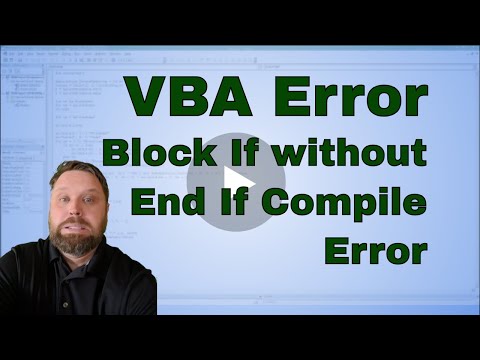
Found 46 images related to end if without block if theme


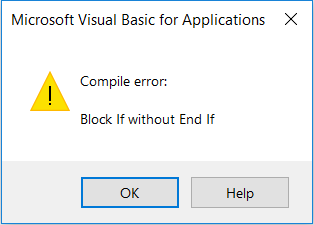
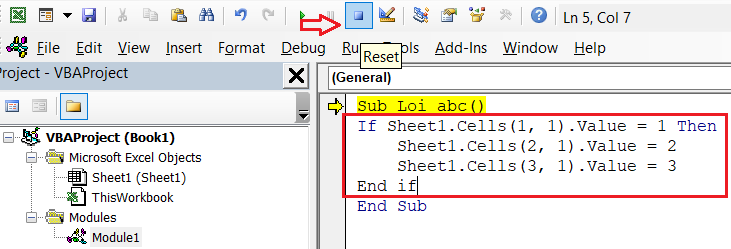
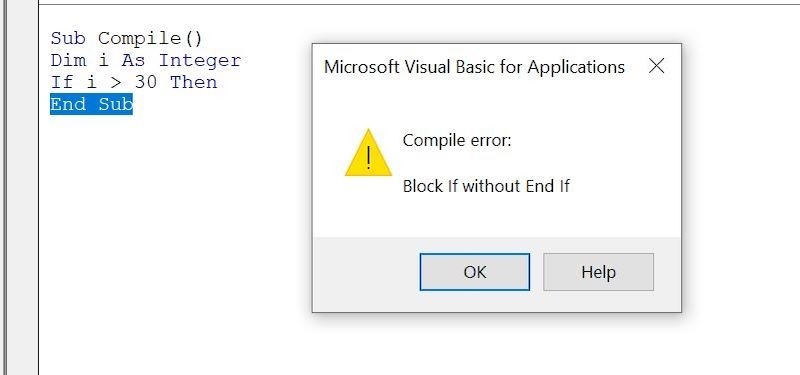




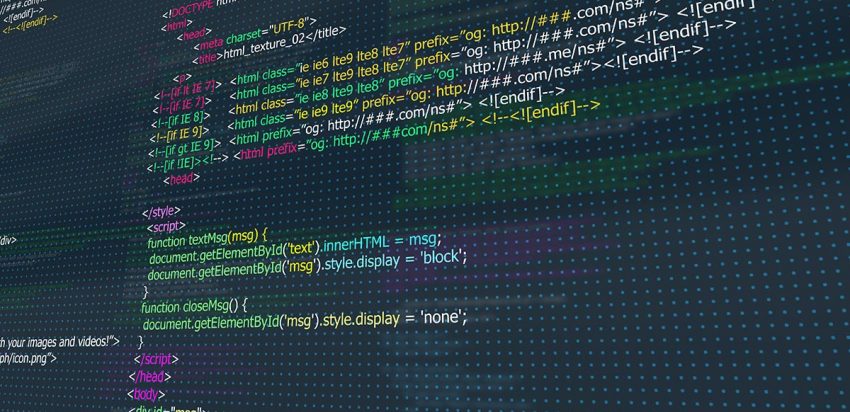

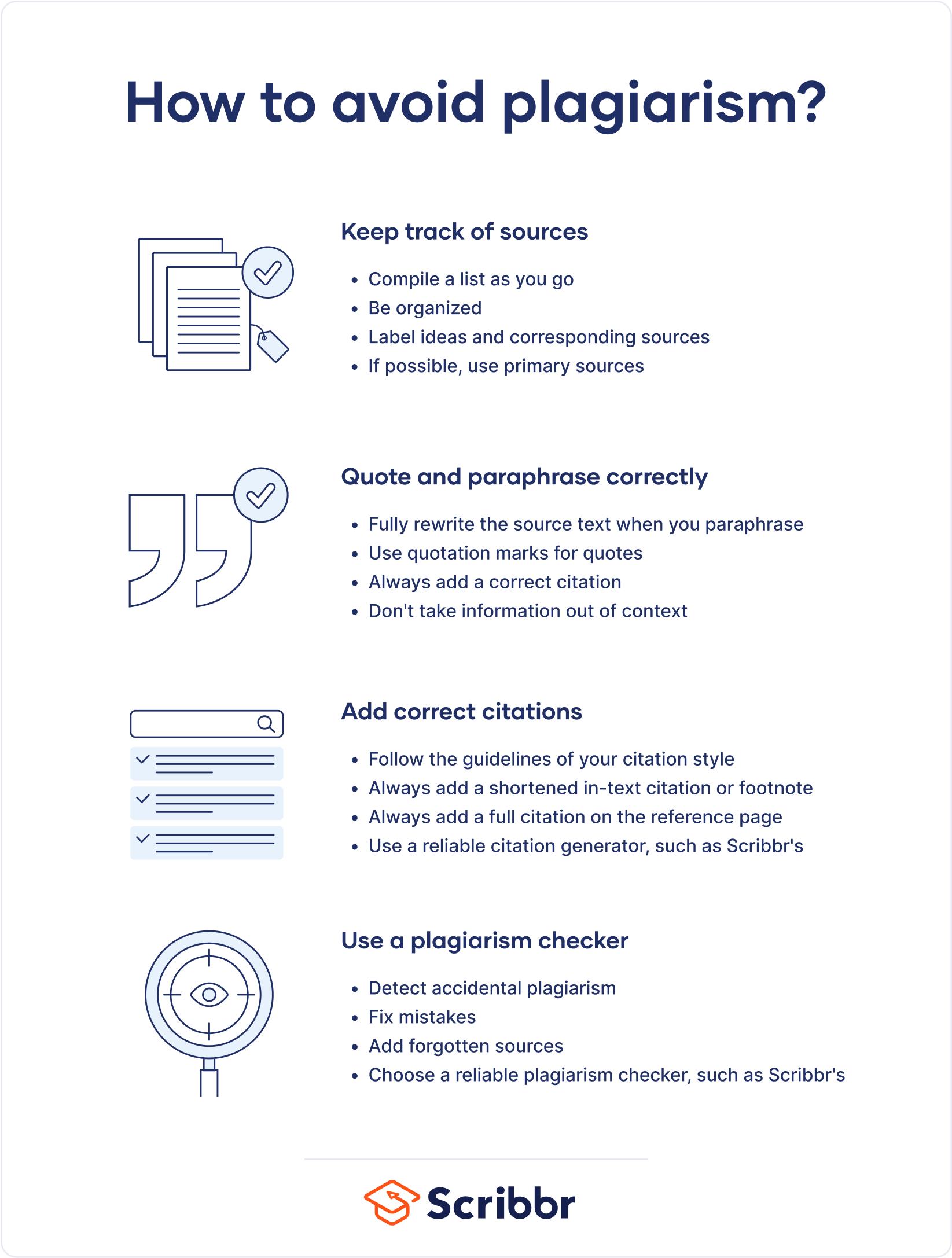
:max_bytes(150000):strip_icc()/Blockchain_final-086b5b7b9ef74ecf9f20fe627dba1e34.png)


Article link: end if without block if.
Learn more about the topic end if without block if.
- How to Fix the “End If without block If” Error – VBA and VB.Net …
- End If without block If | Microsoft Learn
- VBA Runtime Error (Error 1004) – Excel Champs
- MS Excel: How to use the IF-THEN-ELSE Statement (VBA)
- IF (Block) (FORTRAN 77 Language Reference) – Oracle Help Center
- Sao không thiếu End If | Giải Pháp Excel
- Compile error: End If without block If – vba – Stack Overflow
- Hướng dẫn cách sửa lỗi cấu trúc IF, WITH khi lập trình VBA …
- “End if without block If” – What does that mean? – Mr. Excel
- [Solved]-End If without Block If error VBA-VBA Excel